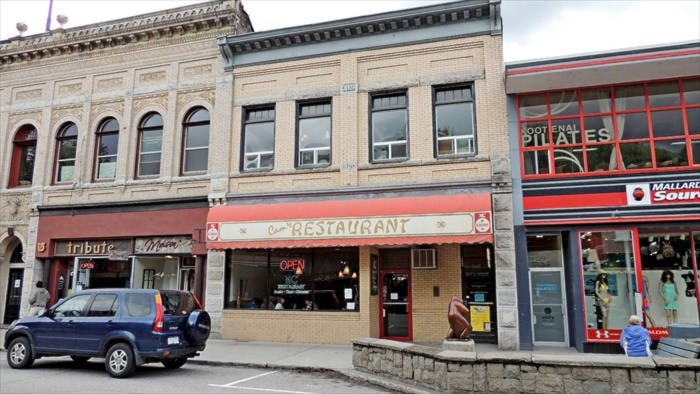By Greg Scott
Dateline May 6, 1920
Smoke ascending from heaps of debris; teams hauling rubbish away, and citizens painting houses, repairing fences, clearing vacant lots and lanes, and generally putting a bright face on the city’s appearance yesterday, all testified to the fact that the spirit of clean-up day was fully observed, both in the city and Fairview.
In many cases the date had been anticipated by enthusiastic gardeners, and some well kept gardens were noted. The maple trees in bud last week are now in flower, and most trees are leafing. Birds are nesting; one busy robin was seen availing itself of a friendly dripping hydrant to collect the mud underneath for its nest; and all the signs of spring marked a beautiful sunny day.
Municipal offices were closed yesterday, and as it was a business half-holiday, the date was opportune for people to get busy – which they did.
Dateline May 8, 1920
Excavation work has been started on the projected commodious new garage of the Nelson Auto Company on Baker being led by the proprietors, K.H. Grenfell and R. Peebles, to F.R. McCharles.
When completed, the building will be a two-story structure measuring 50 feet by 60 feet, with the walls and ground floor made of concrete, and the second floor and roof of wood. Large windows on the sides and at the rear will admit plenty of light to the show rooms and the workshops.
The front of the building which will face Baker Street, will be of red brick. The second story will be on a level with the sidewalk, will be entered from Baker Street, and will contain a show room for the display of cars and accessories, and also the offices and stores.
On the ground floor, which will be entered from Vernon Street, provision will be made for two washracks for car washing, the work benches, and all the necessary machinery for doing general repair work. Free air standards and a gasoline standard will be placed outside the front of the building on the curb. It is estimated that the building will cost about $10,000. (Approximately $122,000 today.)
Dateline May 11, 1920
Excavation work will commence this morning for the foundations of a two-story reinforced concrete block for J.A. Gilker, the local merchant, to occupy the same site on Baker Street as Mr. Gilker’s present store building. John Burns and Sons are the contractors. The new building, which will be considerably larger in area then the one now in use, will be commenced at the rear, to permit business being carried on as usual during construction.
It will, when completed, be two storeys high, the outside walls of which tapering up from a 13-inch sold reinforced concrete foundation, will measure 100 feet long by 30 feet wide. A large basement will be excavated which will contain the heating equipment with provision for an elevator pit, the shaft of which will rise to the height of the building and will be located at the east rear corner. The ground floor will be taken up by the store, business offices, tailoring and dressing rooms. A suite of 12 offices will occupy the second floor and will be accessed by steps at the side of the building.
Dateline May 21, 1920
Launched last week from the slip of the builder, W.C. Walton, the Forcite, the new powder boat of the Canadian Explosives Ltd., made her initial trip Wednesday, bringing down powder from the magazine at Five Mile, for various points.
The Forcite is 35 feet long with eight-foot beam, and is equipped with a 15 h.p. engine capable of making 10 miles an hour, and has a capacity of carrying about 160 cases of powder. Capt. Charles Maltby is sinfully puffed up over his new craft.
The boat will be used in carrying powder from the magazine to the city wharf, and also in the upper lake. For many years the Gelignite, predecessor to the Forcite, proudly plowed the waves of the lake and arm, but was burned at the waterfront last year.
Dateline May 25, 1920
As the last toot of the Kuskanook’s siren died away shortly after 8 o’clock yesterday morning, about 200 of Nelson’s citizens, all in a holiday mood, were started on the four-hour trip through the wonderful scenery of Kootenay Lake, in beautiful sunshine that glinted on the waters in the wake of the steamer, threw richly colored reflections of verdant tree covered mountains on the lake’s surface ahead, and bathed everything in a warm glow of light.
As the steamer threaded its way along the course, at times almost brushing both banks, at others, alone in a wide expanse of water that changed color with the passing clouds, every landing was visited for additions to the load of holiday makers, whose one great aim was to leave everyday affairs out of mind, and to enjoy in a spirit of adventure the Victoria Day celebration at Kaslo, towards which they were bound.
